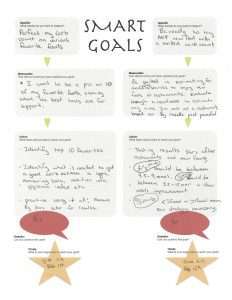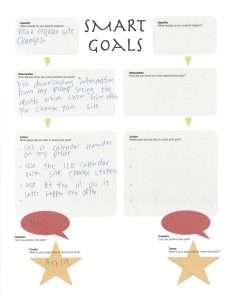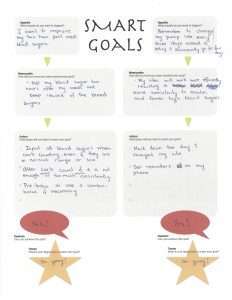My name is Emilee Wilson and I’m 24 years old. I have lived with T1D for 23 years and though I have had my fair share of struggles with this disease, I have excelled in my life despite it. I am a passionate dancer and currently teach ballet. One thing I have learned is that there is a lot to gain in our lives from building healthy goals – and even more when others who understand are able to contribute to them, as is the case here with the ICD community!
I’ve asked some friends to share a goal for their diabetes and how they plan to achieve it. I’ve also written a bit more about goal setting below. Take some time to read through this and think about a goal for yourself, if you don’t already have one. Look at some of our examples and don’t be afraid to borrow an idea or ask a question if you need!
What are YOUR diabetes goals?
The start of the New Year is a pertinent time to set goals for oneself (that’s why everyone’s doing it after all!); the hustle and bustle of the holidays has settled down, the calendar has been switched, and we already have to form a new habit – writing 2017 rather than 2016.
As much as I’m a firm believer that one should not wait for specific times of the year to set goals, I do believe that setting a New Year’s resolution(s) can be a wonderful opportunity for growth, if one approaches it well. It is not enough to just arbitrarily pick a vague resolution just because it is the New Year and/or it sounds good. This is the case where New Year’s resolutions can be cliché. In the end, they are just not meaningful and will likely not lead to lasting change.
In order to set an effective resolution, you must identify the changes you want to make (i.e. the GOAL) by examining your life as it is right now and considering where you would like it to be. There are many areas to consider pertaining to diabetes management and overall well-being with diabetes. Some areas you may want to challenge yourself are: consistent with monitoring, or adding a test in at important times, carb counting, adjusting bolus habits, recording things, healthy eating, physical activity, engaging your support networks and ways to reduce stress. Addressing any of these areas can lead to improved quality of life with diabetes.
It is crucial then to identify the steps to take (i.e. the PLAN) in order for the goal to become manifest. Often, a resolution’s failure is a result of not actually planning (and implementing) the steps that need to be taken in order to get there. If the steps are unidentified or the gap between reality and the goal is too large and unrealistic, achieving the goal is, well, next to impossible.
Setting lofty, nonspecific goals tends leave a lot of room for life to get in the way. Then come the excuses: “I’m too busy”, “Today I can’t because there’s too much traffic and the weather sucks and my family…” These may be true statements, but nothing is going to change if you don’t take action. There are always going to be roadblocks, there are always going to be challenges. The key is making sure you have simple steps that are possible even when life and diabetes and Murphy’s law get in the way.
If you set mini goals (so simple it may even seem silly!), you’ll often exceed them. And then you can up the ante next time. Being realistic and putting in that teensy but consistent effort is how habits are built and resolutions are kept.
Let’s take our diabetes management. When you’re having a day where the numbers are all over the map, motivation can quickly fade. My solution: don’t rely on motivation. Motivation is flaky; it comes and goes. Instead, focus on doing the next right thing (ie. action). Even a diabetic with a perfect A1C has those moments, so don’t expect perfection; accept the struggles and just take the next step in the right direction towards your goal.
A recommended approach is to set SMART goals. These are…
- SPECIFIC – know exactly what it is you want to achieve (answer detailed questions about your goal – what am I going to do? how much am I going to do? when/how often am I going to do it?
- MEASURABLE – have a way to measure progress in order to stay on track (i.e. check blood sugar 6 times per day – did I do this today? Y/N)
- ATTAINABLE – break your goal down into smaller objectives which will allow you to take tangible steps towards it (i.e. start with consistently checking 4x per day before upping the ante to 6)
- REALISTIC – though your goal should challenge you, it is important to ensure you feel confident in your ability to achieve the goal – that it is not so daunting that it overwhelms and paralyzes you
- TIMING – set a specific window of time in order to achieve your goal – “someday” is not a day on the calendar 😉
Take advantage of our SMART goal template for your use in defining and planning your goal!
Download the Smart goal template here
Check out some Smart goals that were filled out by the team about their goals for 2017.













